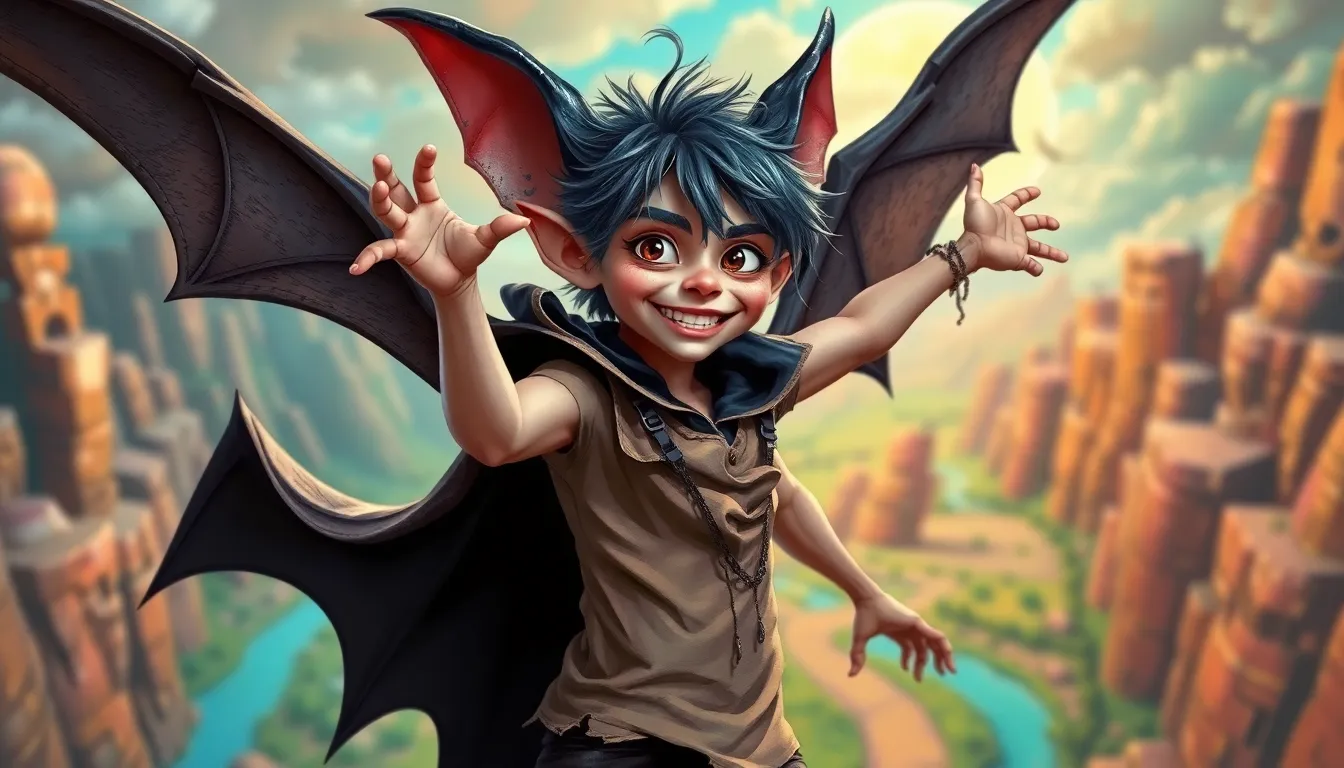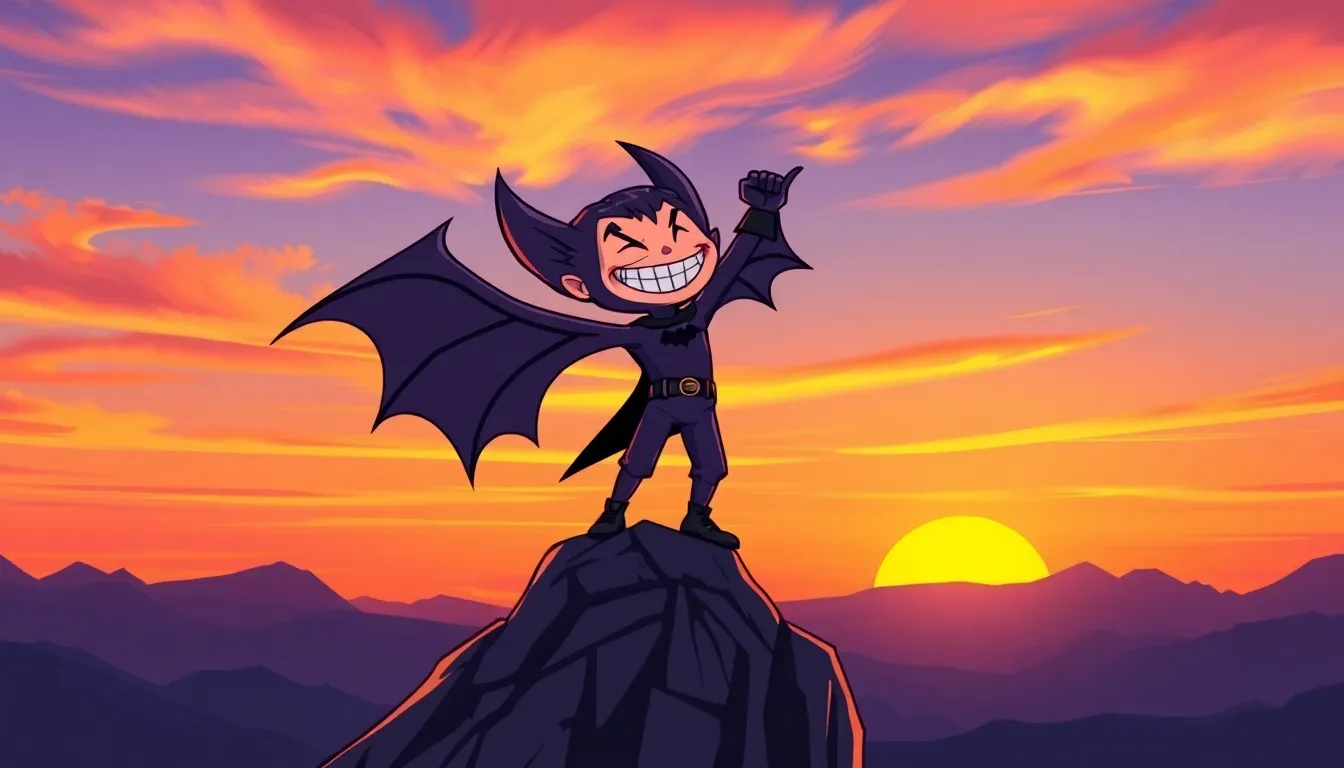In the quirky realm of tabloid journalism, few stories capture the imagination quite like the adventures of Bat Boy. This half-boy, half-bat creature burst onto the scene in the pages of the Weekly World News, turning heads and raising eyebrows with his outrageous antics. Who wouldn’t want to read about a pint-sized hero battling aliens or solving mysteries in a small town?
Bat Boy isn’t just a figment of wild imagination; he’s a cultural phenomenon that embodies the absurdity and charm of sensational news. With a blend of humor and intrigue, his tales remind readers that sometimes the most bizarre stories are the most entertaining. Dive into the world of Bat Boy and discover why this little legend continues to fly high in the hearts of fans everywhere.
Bat Boy Weekly World News
Bat Boy emerged as a unique half-boy, half-bat character in the pages of Weekly World News. Appearing first in the 1990s, he quickly captured readers’ imaginations with his outlandish adventures. Battling aliens, solving bizarre mysteries, and navigating unusual situations showcase the character’s charm and absurdity.
Tabloid journalism often features sensational stories, but Bat Boy often stands out due to his engaging narrative. Fans connect with his whimsical nature and the playful exploration of the unknown. The blend of humor and creativity appeals to a diverse audience, cementing Bat Boy’s status in pop culture.
Readers can explore various escapades that include his interactions with mythical beings and adventures in extraordinary settings. Tabloid headlines featuring Bat Boy often highlight sensational yet entertaining tales. Notably, the character has inspired merchandise, fan art, and even discussions on folklore and mythology, emphasizing his impact beyond the tabloid pages.
Cultural influence arises from Bat Boy’s ability to entertain while challenging traditional storytelling. Moreover, the character prompts discussions surrounding the nature of sensationalism in media. Engaging narratives encourage readers to embrace the absurd, proving that the wildest tales can provide entertainment and provoke thought.
The Origin of Bat Boy

Bat Boy emerged as a memorable character in the Weekly World News during the 1990s. Readers quickly embraced him for his unique blend of whimsicality and eccentric adventures.
Early Appearances
Bat Boy first appeared in a 1992 issue, captivating audiences with his half-bat, half-boy persona. Stories featured him rescuing people, battling aliens, and confronting various supernatural entities. His thrilling exploits showcased the imaginative storytelling that characterized tabloid publications. Each issue presented readers with a mix of ridiculous scenarios and unexpected twists, solidifying his popularity. Frequent appearances in the magazine contributed to his notoriety, making him a household name in tabloid culture. By the late 1990s, Bat Boy had developed a loyal fan base eager for his next absurd adventure.
Cultural Impact
Bat Boy transcended his tabloid origins, becoming a cultural icon over the years. Merchandise featuring his likeness emerged, including toys and apparel, reflecting his widespread appeal. Fans created diverse art interpretations, showcasing creativity inspired by his character. Discussions surrounding media sensationalism often include references to Bat Boy, illustrating how absurd narratives can resonate with audiences. His influence extends into popular culture, appearing in various parodies and online memes. By embodying the intersection of humor and the bizarre, Bat Boy serves as a reminder of the entertainment value found in the outrageous.
Notable Articles and Stories
Bat Boy’s journey through Weekly World News has produced numerous unforgettable tales that captivate readers.
Memorable Headlines
Sensational headlines captured attention, such as “Bat Boy: The Boy Who Lived in a Cave.” This article showcased his incredible adventures, sparking curiosity about his origins. Another attention-grabbing piece, “Bat Boy Saves the World from Aliens,” highlighted his daring heroics. These catchy phrases not only entertained but also encouraged a curious exploration of Bat Boy’s universe.
Influence on Pop Culture
Bat Boy’s impact on pop culture extends beyond tabloid pages. He inspired countless parodies, sketch comedy segments, and internet memes, embedding him within modern humor. Various artists created fan art, showcasing interpretations that resonate with audiences. His adventures often serve as reference points in discussions of media sensationalism, reflecting society’s fascination with the bizarre. Ultimately, Bat Boy became an emblem of creativity, captivating imaginations across diverse platforms.
The Legacy of Bat Boy Weekly World News
Bat Boy’s impact continues to resonate well beyond tabloid pages. His quirky tales maintain relevance even decades after their debut, demonstrating the enduring appeal of absurdity in media. Unique characters like him often spark discussions around sensationalism and the entertainment value of outrageous stories. Several modern platforms reference Bat Boy as they explore themes of exaggerated narratives and cultural satire.
Continued Relevance
Bat Boy remains a beloved figure among fans of all ages. His bizarre escapades, ranging from saving the world to diving into elaborate conspiracies, attract interest long after original publications. Frequent allusions in contemporary media highlight his lasting presence. Diverse platforms, including social media and podcasts, discuss his influence, further solidifying his status as a cultural icon. The character also appears in new formats, such as digital comics and animations, showcasing adaptability to modern storytelling.
Fan Community and Fandom
Fervent fans celebrate Bat Boy through various mediums. They create fan art, memorabilia, and merchandise that encapsulates his whimsical essence. Online communities share artwork and theories, fostering a sense of belonging among enthusiasts. Regular meet-ups and discussion forums allow fans to connect, celebrate shared interests, and keep the spirit of Bat Boy alive. Events that feature merchandise and discussions about his adventures encourage newcomers to discover his legacy, reinforcing the character’s place in popular culture.
Conclusion
Bat Boy’s journey from a quirky tabloid character to a cultural phenomenon showcases the power of imagination and humor. His adventures resonate with audiences of all ages, proving that even the most outrageous stories can captivate and entertain. The legacy of Bat Boy continues to thrive as fans celebrate his eccentricity through art, merchandise, and lively discussions.
As media evolves, the charm of Bat Boy remains relevant, reminding everyone of the joy found in absurdity. Whether through parodies or memes, his influence is undeniable. Embracing the whimsical world of Bat Boy invites readers to appreciate the creativity and laughter that such characters bring to popular culture.

